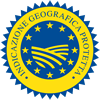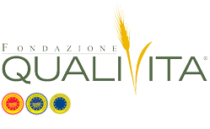Description
The Volailles du Maine PGI include white, yellow and black free-range poultry coming from slowraising, rustic breeds.
Production Area
The production area of Volailles du Maine PGI includes the area of Maine river and its confluents, the municipal areas located in the following departments: Sarthe, Mayenne, Orne, Eure-et-Loir, Loir-et-Cher, Maine-et-Loire, Indre-et-Loire, in the Pays-de-la-Loire, Lower-Normandy and Centre regions.
Production Method
The poultry receive a diet consisting above all of vegetables and minerals, with almost 75% of cereals. The animals are raised in the open air, in grassy and shaded areas where they can complete their diet. Slaughtering takes place when the winged animals have achieved an age close to sexual maturity, which changes depending on variety.
Appearance and Flavour
Volailles du Maine PGI have a high quality flesh, characterised by compactness and tenderness, with no excess of fat.
History
Volailles du Maine are historically well-known. Already since the Middle Ages, the production of poultry played an important economic role, as it was used to pay the feudal tax. In the 15th and 16th century, the cultivation of buckwheat in the area of Maine enabled to produce high quality poultry. More recently, the reputation of which Maine poultry enjoyed was further confirmed by some famous bibliographies dated back to 1881.
Gastronomy
The Volailles du Maine PGI can be conserved in the refrigerator for a few days, in their original package. These fowls can be prepared in different ways depending on the specific cut. They are used to prepare a lot of dishes, from the simplest to the most elaborated. They can be cooked whole or in slices, stuffed or not, roasted in oven, roasted or fried with sesame seeds. The best seasoning consists of aromatic herbs and spices, white or tomato sauce with a bit of olive oil or cream.
Marketing
The Volailles du Maine PGI include different types of products, depending on the specific varieties of poultry of the denomination which are individually written on the package. Amongst these, there are dinde fermière de Noël, pintade fermière élevée en plein air, oie fermière à rôtir, chapon fermier, poule fermière élevée en liberté, poularde fermière, canard de Barbarie fermier élevé en plein air, chapon de pintade fermier, poulet fermier élevé en plein air (blanc, jaune or noir) (Christmas farm turkey; farm guinea hen raised in the open air; farm goose to roast; farm capon; farm chicken to free raise; farm pullet; farm duck of Barbarie raised in the open air; farm guinea-hen capon; farm, white, yellow and black chicken raised in the open air). It is marketed fresh or frozen, whole with or without head or in slices packed in trays with protected atmosphere which guarantee a longer conservation and keep its organoleptic features.
Distinctive Features
The fertility of the lands of the Maine River area enabled to cultivate quality cereals which have ever been the base of the diet used by the small or big poultry farms located in this area to nurture farm poultry. This peculiar type of nurture together with the opportunity to access to grassy areas make the fowls of Volailles du Maine PGI extremely precious.






